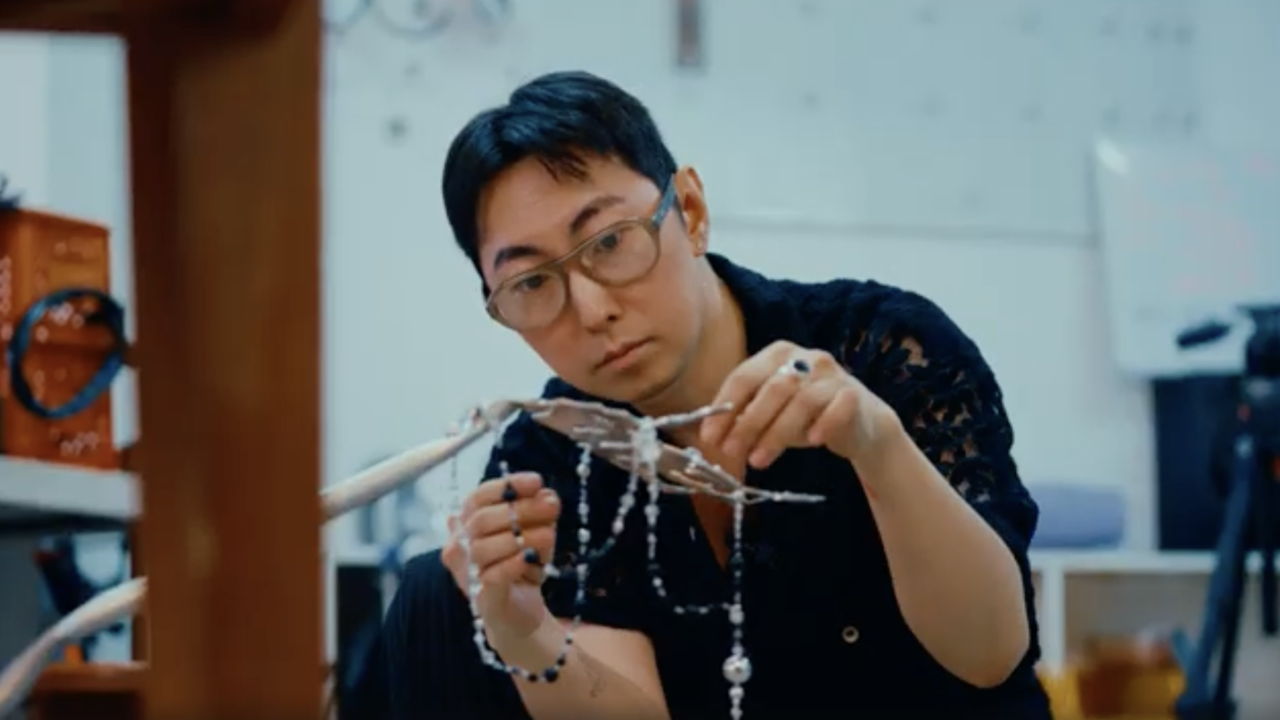Maria Lassnig
Contemplating a bizarre water-colour blob of pale pinks, gentle oranges and faint greens enveloped in lots of white space, the guy behind me whispers low. He says he's looking for the seated figure the label describes. But he needn't bother: one of the most frustrating, and fascinating, aspects of Maria Lassnig's work is that her highly specific titles are utterly misleading, merely a classification system for a lifetime of abstractions that attempt to represent the intangible. Still, he's hit on something - Lassnig seems to be uneasily, desperately searching for her own identity. Collapsed, deformed, contorted, her radical body-metamorphoses completely defy traditional representations of the figure. They portray internal sensations or, as Lassnig puts it, they paint the body from the inside.
Flesh, burn and bruise-coloured visualisations of panic, fatigue, pain, frenzy, and exertion, Lassnig's oils reveal her guts, like the Frieda Kahlo self-portrait brutally split open as if by a surgeon's knife. Composed of gestural stripes and splotches of juicy colour, and constructed nearly life-size on the studio floor, her abstract paintings of wounded women in perpetual permutation have much in common with the attraction-repulsion pull expressed in the work of Kahlo or, say, Louise Bourgeois.
Lassnig's first retrospective in France, this exhibition of works on paper gathers together drawings, water-colours, and gouaches spanning the prolific career of the 77 year-old Austrian artist. Beginning with early representational portrait drawings whose nervous energy recalls Kokoschka, these pictures offer rare insight into her impulses and working methods. In the late 40s, Lassnig's version of analytical Cubism depicted her symbiosis with foreign objects, as in Self-portrait with Lemon (1949), in which the fruit segments take the place of eyes or ears, extending alongside tiny, claw-like hands and feet from a twisted torso. Later, her exploration of a central theme, which she calls 'body awareness', takes on a Surrealist slant and the disjointed figures become amorphous, like Matta's.
Lassnig has also investigated incessant combinations of her own image with those of nature (a barren beach, a tree-covered mountain) and animals (a sleeping tiger, a spry little mouse), and pursued a series of contour-drawing dissections in which the inanimate body is transformed into an intricate pipeline. One of the most terrifying drawings portrays her utter loss of individuality and concretises her perception of the body as numb and alien: a passive figure lies prostrate, its head brutally lopped off and replaced by an anchor. Here, Lassnig's eccentric foreshortening brings to mind our distorted views of our own bodies, in which only extremities - arms, hands, legs, feet - and perhaps a protruding belly, or the tip of a nose - remain visible.
Simple and spare as they are, deep-black charcoal drawings such as Self-portrait as Mushroom (1958) communicate a sense of heft, of corporeality. Though sometimes moving inside the form, here the line often acts as a protective skin wrapped around erratic dumpling or robot-like shapes. At times nearly invisible, the unctuous, smudged and smeared traces of her markings and her vigorous erasures emphasise the intensity of her search for form. While also communicating uncertainty and tension, luminous, fluid gouaches and water-colours such as Woman Seated (1989) and On High, On Low (1989) seem weightless and ethereal. Rather than filling up the page, she leaves much of the pristine space around the figure white, emphasising the vulnerability of her transparent flesh. Depicting a fragmented body literally broken into two, the enigmatic On High, On Low might be seen as a metaphor for the anxious split lying beneath all these pictures; probably less a division between Lassnig and her lover than a gap between physical and emotional reality, between rationality and feeling, within a shattered self.
The fact that this show comes on the heels of the Centre Georges Pompidou's overrated and oversaturated blockbuster show 'Fémininmasculin', which also spoke of the body and identity, points up the sparseness, the subtlety and the serenity of Lassnig's language, which is seemingly devoid of pathos or rage. Yet, it's because of their exquisite fragility that Lassnig's images are so moving. Tender and troubling, her delicate works on paper paradoxically communicate a repressed inner struggle - a bloodless violence made potent by its silence. Their aching beauty renders her pain all the more palpable.
















